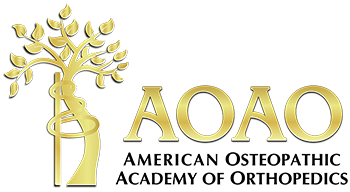Nicholas O’Malley M.S., O.M.S.-IV1; Jeffery Thompson DO2; Maria Cecilia Madariaga DO2; David Chesler MD, PhD3; James Barsi MD3
1New York Institue of Technology College of Osteopathic Medicine
2Nassau University Medical Center, Department of Orthopedic Surgery
3Stony Brook University Renaissance School of Medicine, Department of Orthopedic Surgery
Abstract
Introduction
Pediatric spinal cord injury (SCI) is a rare but serious cause of morbidity and mortality in young children. While several methods and modalities have been described to treat pediatric SCI, few cases have been described in the literature, limiting the creation of treatment guidelines. Thus, the objective of this case study is to Describe a novel approach to an unstable cervical spine injury in a pediatric patient
Methods
This was a case study. Relevant information from the patients chart was reviewed and synthesized, and a literature review was undertaken.
Results
The patient underwent a successful reduction and fixation of atlanto-occiptal dislocation and C6-C7 distraction injury. While the atlanto-occipital dislocation was amenable to halo vest placement, the C6-C7 distraction injury required further bony fusion. This was done through using suture fixation to repair the posterior distraction and an anterior arthrodesis. The anterior arthrodesis was achieved through a posterior approach and used the existing C6-C7 diastasis to place anterior instrumentation.
Conclusion
The use of anterior-posterior fixation via posterior sutures and anterior arthrodesis is safe and effective at treating a lower spinal cord injury in the pediatric population.
Keywords: Pediatric spinal cord injury, cervical trauma, cervical fusion, pediatric spine
Case Report
Background
Pediatric spinal cord injury is rare injury associated with significant morbidity and mortality. (1) There is increased incidence of upper cervical (occiput – C2) injuries in younger children less than 8 years; while an increased incidence of lower cervical (C3 – C7) injuries in older children (2). While the literature on treatment standards remain sparse, general principles of management of these injuries involve stabilization of the vertebral column (3). We present a case of a 2-year-old male with an atlanto-occipital dislocation and C6-C7 distraction spinal cord injury treated with halo-vest immobilization and an anterior interbody – posterior segmental arthrodesis.
Case Report
A 2-year-old male rear passenger restrained only by an adult seatbelt was ejected from a rollover motor vehicle collision. He was transferred to a pediatric level 1 trauma center in extremis, intubated, and wearing a hard cervical orthosis. Initial radiographs demonstrated widening of the atlanto-occipital joint and C6 – C7 distraction measuring 2.4 cm. Magnetic resonance (MR) imaging demonstrated a complete spinal cord disruption at C6 – C7, and MR – angiograph demonstrated patent bilateral vertebral arteries at the level of injury. He was brought to the operating room for reduction of the distraction injury and placement of a halo vest.
After halo-vest placement, the patient remained in the pediatric intensive care unit and underwent a tracheostomy. Neurologic examination was consistent with a complete spinal cord injury at C5. At six weeks following the index surgery, an exam under fluoroscopic imaging demonstrated persistent instability at the level of distraction, but stability of the atlanto-occipital joint.
At this time, he was taken back to the operating room for surgical stabilization. An external ventricular drain to divert cerebral spinal fluid from the operative field was placed. Rib autograft was obtained. A standard posterior midline incision was utilized and subperiosteal dissection was performed. At the level of distraction injury, a wide diastasis was noted among the posterior elements of the vertebral column along with a transection of the spinal cord and diastasis of the vertebral bodies. Anterior arthrodesis was performed to improve stability and bony fusion, anterior arthrodesis was performed. The inferior endplate of C6 and superior endplate of C7 were cleared of disc and scar material. A 5mm lordotic cage was placed through the posterior diastasis and allowed to rest along vertebral end plates (Figure 1). A #5 – braided non-absorbable suture was passed under the lamina of C6 and C7 and secured to reduce the posterior distraction. A series of drill holes were made in each rib graft. The rib grafts were placed on either side of the spinous process (Figure 2). A #5 non-absorbable suture was passed through the spinous processes from C3 – T2 and each free limb passed through the previously placed rib drill holes and tied to themselves. Osteopromotive allograft to enhance fusion was placed around the rib grafts (Figure 3). Intra-operative images demonstrated reduction of distraction deformity and acceptable placement of the implants. The halo-vest was reapplied.
The halo was removed at 3 months from the second surgery after a Cat Scan confirmed bony fusion. At two years post-injury he demonstrates bony fusion at the site of injury without change to his neurologic status.
Discussion
Pediatric SCI is rare among trauma admissions, with an estimated prevalence of 1-2%. (1) Even though this injury is rare, it is associated with significant morbidity and in children under age 3, a mortality of 10.8%. (4) The most common mechanism of injury is motor vehicle accidents, accounting for 81% of cases. (5) While there is much written about the epidemiology and evaluation of this injury, literature to establish treatment standards is lacking.
Surgical indications for pediatric CSI include: persistent instability, neurological compromise, spine deformation, and irreducible fracture-dislocations. (3,6) Surgeons need to accommodate for the smaller, immature bone and growth potential of pediatric patients. (7) The long-term effect of pediatric cervical fusion is mostly unknown, but includes growth potential complications and secondary deformity. (8) Various surgical techniques have been described including suturing, wiring, plates, and screws. (8-11)
Scarce literature on lower CSI in surviving younger patients prevents the establishment of management standards. Two cases of lower CSI in younger patients using solely the posterior approach include: Ha et al. describing using non-absorbable sutures to fix a C6-C7 distraction injury in a 5-month-old, and Matsumoto et al. describing using facet fusion and pedicle screw fixation along with Teflon to reinforce the fixation of a C5-C6 complete disco-ligamentous disruption. (12, 13)
Three additional studies in the literature report on unstable pediatric cervical spine injuries requiring anterior and posterior stabilization. The first case, presented a 15-month-old with complete disco-ligamentous disruption at C6–C7. (14) After stabilization with a halo vest, a modified T-plate was placed on C5-C7 with an antero-medial approach. Posterior approach using a non-resorbable cerclage around the interspinous ligaments was utilized. At 6 years follow-up, no neurological change was observed.
Another case described a 7-month-old with a C5-C6 flexion-distraction injury and motor function loss below C5. A C5-6 microdiscectomy and mini-plate fixation was performed with an anterior approach. To manage the separation in posterior interspinous distance, the lamina was approximated with bilateral sublaminar non-absorbable sutures and fusion enhanced with allograft and iliac crest grafts. At the 1-year follow-up, the patient improved from quadriparesis to paraparesis. (10)
In the present case, stabilization with halo vest apparatus proved insufficient. Thus, both anterior and posterior approaches were needed to re-establish alignment and provide stability for bony fusion. This case is unique because anterior column support was performed through a posterior approach utilizing the diastasis from the injury and spinal cord transection. The present case contributes evidence towards the management of lower cervical spine injuries in younger patients and supports using non-absorbable sutures in lower CSI in younger children.
Finally, Davern presented a 3-year-old with a C6-C7 distraction injury and complete avulsion of the spinal cord. Following placement in a halo vest, a cervical plate was placed with the anterior approach. With a posterior approach, the widened C6-C7 interlaminar space with cord transection was identified, pedicle screws placed into T-1 and T-2, and lateral mass screws into C-5 and C-6. Rib autograft was used. 22 months after surgery, no neurological change was observed. (11)
Required Disclosures and Declaration
Copyright Information: No Copyright Information Added
IRB Approval Information: Yes
Disclosure Information: No known conflicts of interest
References
- Tatka J, Elbayer J, Vojdani S, Pallotta NA, Malik A, Barsi JJJoS. Pediatric Spinal Cord Injury. J Spine. 2016;2016:1-4.
- Eleraky MA, Theodore N, Adams M, Rekate HL, Sonntag VK. Pediatric cervical spine injuries: report of 102 cases and review of the literature. Journal of neurosurgery. 2000;92(1 Suppl):12-17.
- Copley PC, Tilliridou V, Kirby A, Jones J, Kandasamy J. Management of cervical spine trauma in children. European journal of trauma and emergency surgery: official publication of the European Trauma Society. 2019;45(5):777-789.
- Carreon LY, Glassman SD, Campbell MJ. Pediatric spine fractures: a review of 137 hospital admissions. J Spinal Disord Tech. 2004;17(6):477-482.
- Brown RL, Brunn MA, Garcia VF. Cervical spine injuries in children: a review of 103 patients treated consecutively at a level 1 pediatric trauma center. Journal of pediatric surgery. 2001;36(8):1107-1114.
- Duhem R, Tonnelle V, Vinchon M, Assaker R, Dhellemmes P. Unstable upper pediatric cervical spine injuries: report of 28 cases and review of the literature. Child’s nervous system : ChNS : Official journal of the International Society for Pediatric Neurosurgery. 2008;24(3):343-348.
- McCall T, Fassett D, Brockmeyer D. Cervical spine trauma in children: a review. Neurosurg Focus. 2006;20(2):E5.
- Hamoud K, Hershkovitz I, Hanani A, Marom L, Abbas J. Internal stabilization of a flexion-distraction injury of the upper cervical spine of a toddler: a new technique and literature review. Spine (Phila Pa 1976). 2012;37(6):E400-407.
- Ren C, Qin R, Wang P, Wang P. Comparison of anterior and posterior approaches for treatment of traumatic cervical dislocation combined with spinal cord injury: Minimum 10-year follow-up. Scientific reports. 2020;10(1):10346.
- Özbek Z, Özkara E, Vural M, Arslantaş A. Treatment of cervical subaxial injury in the very young child. Eur Spine J. 2018;27(6):1193-1198.
- Davern MS, Garg S, Hankinson TC. Operative management of traumatic cervical spine distraction and complete cord transection in a 3-year-old patient. Journal of neurosurgery Pediatrics. 2015;15(2):214-219.
- Matsumoto T, Kawakami M, Ando M, Yoshida M. Rare case of survival after traumatic disruption of the cervical spine with combined complete spinal cord injury and bilateral vertebral arterial breakdown in an 18-month-old patient. European journal of orthopaedic surgery & traumatology : orthopedie traumatologie. 2014;24 Suppl 1:S311-314.
- Ha S, Lee SH, Kim ES, Shin HJ, Eoh W. Highly unstable cervical spine injury in an infant: a case report. Child’s nervous system : ChNS : Official journal of the International Society for Pediatric Neurosurgery. 2015;31(2):341-346.
- Ramrattan NN, Oner FC, Boszczyk BM, Castelein RM, Heini PF. Cervical spine injury in the young child. Eur Spine J. 2012;21(11):2205-2211.


